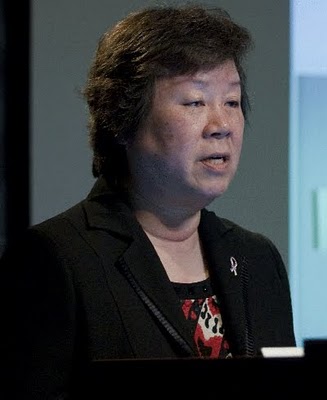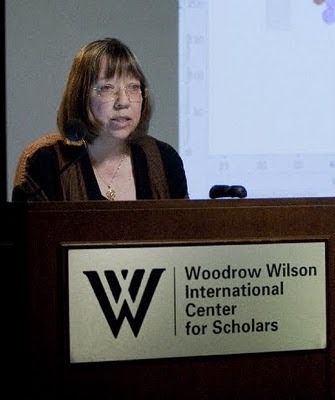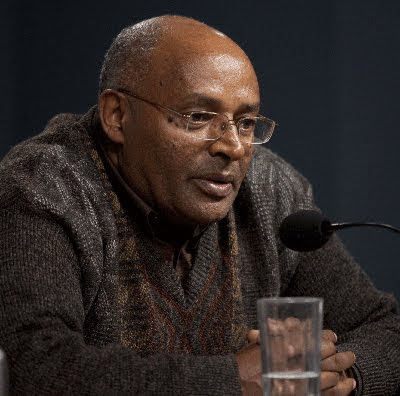Showing posts from category funding.
-
Food Security Comes to Capitol Hill, Part One
›April 30, 2010 // By Schuyler NullThis week, the CSIS Task Force on Global Food Security released its latest report, Cultivating Global Food Security: A Strategy for U.S. Leadership on Productivity, Agricultural Research, and Trade.
According to the report, “the number of people living with chronic hunger has jumped to more than 1 billion people – one sixth of the world’s population – and those trends show no signs of reversal: between 2007 and 2008, the number of people suffering from chronic hunger in the developing world increased by 80 million. In 2009, as many as 100 million additional people were pushed into a state of food insecurity.” The riots and instability during the 2008 food crisis vividly illustrate the consequences of failing to address this problem.
The report outlines six broad recommendations for policy makers:1. Develop an integrated, comprehensive approach to food security;
At the report’s Capitol Hill launch, CSIS President John Hamre compared releasing think tank studies to “casting bread on the water, most of it disappears.” However the high profile Congressional presence—including co-chairs Representative Betty McCollum and Senators Richard Lugar and Bob Casey—proves that awareness of the global food security problem is growing.
2. Empower leadership (USAID) and ensure cross-agency coordination;
3. Support country-led (and country-specific), demand-driven plans for agriculture;
4. Elevate agricultural research and development in the United States utilizing the land-grant university system;
5. Leverage the strengths of the private sector to encourage innovation and give farmers better access to credit and markets; and
6. Renew U.S. leadership in using trade as a positive tool for foreign policy and development in order to improve stability and economic growth at home and abroad.
“We are summoned to this issue by our consciences but we also know this is a security issue,” said Sen. Casey. Along with Sen. Lugar, Casey introduced the “Global Food Security Act of 2009,” which seeks to “promote food security in foreign countries, stimulate rural economies, and improve emergency response to food crises, as well as to expand the scope of the Foreign Assistance Act of 1961 to include conservation farming, nutrition for vulnerable populations, and economic integration of persons in extreme poverty.”
Representative McCollum introduced a similar bill in the House, but neither has made much headway. Senator Lugar said that he hopes the bipartisan and bicameral nature of their bills will help this issue stay afloat during a particularly toxic political atmosphere in Washington.
The release of the CSIS report and its Congressional support is particularly timely, as USAID just announced the 20 focus countries for the “Feed the Future” Initiative, which are Ethiopia, Ghana, Kenya, Liberia, Mali, Malawi, Mozambique, Rwanda, Senegal, Tanzania, Uganda, and Zambia in Africa; Bangladesh, Cambodia, Nepal, Tajikistan in Asia; and Guatemala, Haiti, Honduras, and, Nicaragua in Latin America. The White House pledged an initial $3.5 billion over three years for the Feed the Future Initiative, with additional pledges from other G-8 and G-20 members to total $18.5 billion.
In addition, the State Department is in the midst of preparing its first-ever (and long-delayed) strategic doctrine for diplomacy and development, the QDDR, in which agricultural development is expected to have a major role.
Speaking on behalf of the State Department, Acting Deputy Assistant Secretary for Trade Policy and Programs William Craft echoed the previous testimony of Deputy Secretary of State Jacob Lew on Feed the Future, saying that the United States believes development should be on par with diplomacy and defense, and is both a strategic and moral imperative.
Next up: “Food Security Comes to Capitol Hill, Part Two” on the particular role women can play in increasing global productivity, if given the chance.
Photo Credit: “World Food Day,” courtesy of flickr user JP. -
Event Update: Sustainable Urbanization
›April 21, 2010 // By Julien KatchinoffThe newfound American engagement on international urban issues lauded by UN-HABITATS’ Christopher Williams and the Wilson Center’s Blair Ruble last week has been formalized in legislation introduced today by Senator Benjamin L. Cardin (D-MD), Senate Foreign Relations Committee Chairman John Kerry (D-MA), and Senator Dick Durbin. (D-IL)
From Modernize Aid:The Sustainable Urban Development Act of 2010 (S. 3229) seeks to deal with unprecedented growth from enlarging slums, increasing levels of pollution, overburdened transport systems, and the lack of affordable housing. The bill would direct the USAID Administrator to: 1) develop a strategy to foster sustainable urban development; 2) consider establishing a senior advisor for urban development; and 3) establish a pilot urban strategies initiative that will help a select number of cities create a policy framework for future growth and development.
In a statement for the release of the legislation, Senator Kerry echoed Williams’ thoughts on the subject of urbanization and U.S. foreign policy. “There is an explosion of urban growth around the globe – already the majority of the world’s population lives in urban areas, with approximately one billion people residing in slums. The phenomenon of urbanization will be ignored at our own peril. Responsible citizens of the world must consciously harness their creativity and ingenuity to increase the livability, economic viability, and environmental sustainability of our cities,” Kerry said.
Facts about the Sustainable Urban Development Act of 2010:(From the Press Release, COMTEX)
(Summary Courtesy Congressional Documents and Publications/ContentWorks via COMTEX)
* The bill includes a statement of policy that recognizes urban development as an objective of United States foreign policy and overseas development assistance, particularly programs that foster improved urban governance, management, and planning, promote the formal provision of and access to essential urban services and infrastructure, expand access to basic shelter, affordable urban housing, promote economic growth and alleviate poverty, and respond to and prepare for environmental and climatic challenges.
* It directs the Administrator of USAID to develop a strategy to foster sustainable urban development that will update the Making Cities Work Urban Strategy. Specifically:
– Assess the feasibility of establishing a senior advisor for urban sustainable development at USAID, who would provide leadership for coordinated programming, technical support for urban development, disseminate best practices, guide urban programming, and help build the capacity of government officials in developing countries to more effectively manage urbanization
– Consider establishing a pilot urban strategies initiative that would support, through technical and financial assistance, a select number of cities in developing countries by identifying, developing, and implementing long-term sustainable urban development strategies to provide a framework for future growth and development in identified countries
– Review and assess existing or past U.S. programs and foreign assistance strategies designed to improve urban development and ensure that strategies to address urban development and slums in developing countries are integrated into the broader strategic foreign assistance plans of USAID and the Department of State
– Develop a strategy for providing long-term United States support for sustainable urban growth and development initiatives that draws upon the expertise of U.S. city and regional elected officials and professionals, private foundations, NGOs, policy, education and research organizations, United Nations organizations, and multilateral development banks.
Photo Credit: “US Capitol” courtesy Flickr User ehpien -
Sustainable Urbanization: Strategies For Resilience
›April 19, 2010 // By Julien KatchinoffUrbanization is both an opportunity and a challenge,” argued Christopher Williams from UN-HABITAT during a panel discussion at American University’s School of International Service. “Sustainable Cities: A discussion on the social, economic, and environmental strategies contributing to urban resilience” brought together sustainability experts to discuss innovative strategies for urban resilience in the face of the 21st century’s looming challenges.
Urbanization “is an opportunity in the sense that there’s a tremendous amount of innovation that’s going to take place with a concentration of ideas and economies and cultures in these urban spaces,” said Williams. “It’s a challenge in the sense that many of these cities are ill-equipped to handle this large influx of population.”
Williams outlined the principal challenges of an urbanizing world:
Land and shelter: New policies are needed for creating affordable housing for new urban citizens, securing land tenure, and limiting forced evictions of future urban dwellers.
Infrastructure: Finding solutions for fragile water, transportation, and sanitation systems requires thoughtful planning, solid investment, and demand management. Investors must be cognizant that many cities have limited resources and institutional capacity.
Municipal planning, management, and governance: Managing decentralization and interfacing with communities and the private sector are critical to success.
Innovative finance: Future sources of investment will increasingly be limited to private funds and community savings. Official Development Assistance (ODA) will have to be used in strategic ways to trigger such investments.
Williams noted that existing conceptions of urban challenges–that they are “messy, complex, interlinked”–paint an unflattering picture for policymakers, dramatically reducing their willingness to engage with these environments. The implied heavy transaction costs of operating in urban areas can discourage investors. Development agencies often look for opportunities where they can get in and out quickly; historically, most aid has focused on rural areas, usually with relatively short planning windows (5-10 years).
Today, decisions regarding the movement of urban populations are linked to extremely contentious power relations. Williams posited that by couching programs within the frame of adaptation and resilience, mayors and municipal governments may be able to tackle issues of social inequality that have plagued some cities for years.
Citing a 2008 seminar on community resilience, the Wilson Center’s Blair Ruble argued that the world’s increasing attention to urban challenges holds the risk of creating programs and institutions that are blind to the rich complexity of these systems. Although the theme of last month’s World Urban Forum 5 in Rio de Janeiro was “The Right to the City,” he said that many organizations were redefining “resilience” in top-down terms, silencing the variety of vulnerable voices that make up urban centers.
The visible commitment by the United States delegation to the World Urban Forum was noteworthy, said Williams, as it represents a dramatic departure from status quo. American foreign policy and development assistance have predominantly focused on agricultural policy, with varying degrees of interest on water and sanitation. Surprisingly, little attention has been paid to land tenure issues, and even less to urban issues.
This shift, Williams said, may be due to a change in perspective under the Obama administration. For the first time, many staffers have experience working on urban issues. The newly created Office of Urban Affairs, within the Domestic Policy Council, is headed by Obama advisor Valerie Jarrett. This new high-level engagement and issue integration demonstrates that urban issues are important to the White House, which has trickled down to the EPA, the Department of Agriculture, and the Department of State.
Domestic urban centers have received new initiatives and funding through the Reinvestment Act, spurring the creation of projects targeting transportation, urban planning, and regional economic growth. Many observers hope, however, that this newfound engagement will translate into solid action internationally, as many urban and rapidly urbanizing centers cope to adapt to the future.
Photo Credit: “Favela no de Rio,” courtesy flickr user kevin.j. -
To Invest in a Sustainable Future, Fund Voluntary Family Planning
›President Obama’s proposed federal budget for FY2011 includes $715.7 million for international family planning and reproductive health assistance—10 percent ($67 million) more than what was included in the FY2010 budget that Congress approved last December. If approved, the FY2011 allocation would be 54 percent more than the FY2008 budget, which was equivalent to the amount allotted in 1974 when adjusted for inflation. The recent increases mark the end of more than 30 years of stagnation in U.S. funding for voluntary family planning—and herald a new investment in a sustainable future.
Over the last 20 years, the number of women of reproductive age in the developing world has increased by 465 million. Today, the Guttmacher Institute estimates that 201 million women in developing countries want but lack access to modern contraceptives. “Satisfying the unmet need for contraceptive services in developing countries would avert 52 million unintended pregnancies annually, which, in turn, would save more than 1.5 million lives and prevent 505,000 children from losing their mothers,” the Institute reports.
Rapid population growth in some of the world’s most economically disadvantaged countries poses a significant threat to their natural resources and the environment. Currently, more than 1 billion people live in ecological hotspots—areas that are both rich in plant and animal diversity and highly threatened by human activity. Although these areas comprise just 12 percent of the Earth’s land surface, they hold nearly 20 percent of the global population and possess a population growth rate nearly 40 percent greater than the world average. The cumulative impact of a growing global population, which demands more natural resources and exacerbates already unsustainable patterns of consumption, degrades the most basic foundations of life—air, water, croplands, forests, and fisheries—and contributes to climate change.
Improving access to voluntary family planning not only contributes to smaller, healthier families, but also eases the strain on natural resources. By giving couples the information and supplies to plan the number and timing of their children, U.S.-funded population and reproductive health programs have helped countries slow population growth and reduce population pressures on finite natural resources, including local habitats and wildlife. In addition, the success of USAID’s population, health, and environment programs also offers important lessons for climate change adaptation and building resilience in local communities.
In our interconnected environment, the impacts of natural resources use, management, and protection around the world are felt here in the United States. Despite the difficult budgetary and economic environment our country faces, the president’s request for approximately $716 million in international family planning and reproductive health assistance funding is a wise long-term investment. These resources are an important step toward the broader goal of investing $1 billion in these critical programs to create a healthier, more sustainable future for our world.
Rebecca Wadler Lase is the program associate for the Sustainability Education Program at the Izaak Walton League of America.
Map: “Poverty-Biodiversity Mapping Applications.” Courtesy UNEP/Grid Arendal. -
Maintaining the Momentum: Highlights From the Uganda International Conference on Family Planning
›“Family planning is to maternal survival what a vaccination is to child survival,” said Johns Hopkins professor Amy Tsui, quoting Khama Rogo of the World Bank, at the Woodrow Wilson Center event Maintaining the Momentum: Highlights From the Uganda International Conference on Family Planning on March 16. Rogo made the strong statement during the landmark November 2009 conference in Kampala, which has renewed interest in family planning and reproductive health among African leaders and development partners. Rhonda Smith of the Population Reference Bureau and Sahlu Haile of the David and Lucile Packard Foundation joined Tsui, the director of The Bill & Melinda Gates Institute of Population & Reproductive Health, to discuss their impressions of the Kampala conference and what it means for the future of family planning in Africa.
“An event that happened at the right time”
“Kampala was the work of a community,” said Tsui. More than 50 organizations—the U.S. Agency for International Development, the UN Population Fund, the World Bank, the World Health Organization, and the Gates and Packard Foundations—convened in Uganda, which was chosen not only for its central location, but also to highlight the country’s soaring unmet need for contraception—41 per cent—and rapid 3.1 percent population growth rate.
Panels focused on key issues in family planning, including:- Integrating family planning into HIV/AIDS care
- Integrating family planning in post-abortion, postpartum, child, and other primary health care
- Expanding contraception delivery services by community health workers
- Increasing outreach to youth and men
- Capitalizing on private and public innovations in service delivery and financing
- The United States announced its foreign assistance budget will increase support for family planning from $450 million to $715 million for the next fiscal year.
- The Global Health Initiative identified maternal/child health and family planning as one of its main priority themes.
- Secretary of State Clinton positively discussed girls’ education, family planning, and reproductive health at the ICPD + 15 anniversary.
- The Women Deliver 2010 Conference, to be held in June, has identified family planning as a third pillar of maternal health.
Uganda on the Move Rhonda Smith’s presentation “Uganda on the Move”—which she also presented in Uganda—is a prototype of the Population Reference Bureau’s new ENGAGE (Eliminating National Gaps—Advancing Global Equity) project, which is designed to “engage policy audiences and promote policy dialogue around issues of high fertility and high unmet need for family planning and their costs, consequences, and solutions,” she said. By using stunning, innovative graphics and avoiding confounding technical terms, ENGAGE’s products are designed to reach non-technical policy audiences and influential decision-makers.
Rhonda Smith’s presentation “Uganda on the Move”—which she also presented in Uganda—is a prototype of the Population Reference Bureau’s new ENGAGE (Eliminating National Gaps—Advancing Global Equity) project, which is designed to “engage policy audiences and promote policy dialogue around issues of high fertility and high unmet need for family planning and their costs, consequences, and solutions,” she said. By using stunning, innovative graphics and avoiding confounding technical terms, ENGAGE’s products are designed to reach non-technical policy audiences and influential decision-makers.
As one of the Uganda conference’s most talked about presentations, “Uganda on the Move” wows audiences with visuals created using Hans Rosling’s Trendalyzer software. The presentation shows that although Ugandans are increasingly healthier, have a higher life expectancy, and are more educated, maternal health remains in jeopardy. Tellingly, 46 percent of pregnancies in the country are unplanned, 6,000 women die each year from complications related to pregnancy, and 1,200 women die each year from undergoing unsafe abortions.
Maternal deaths, however, do not tell the whole story: For every one woman dying, Smith said, 20-30 women suffer from short-term disability, which places a major strain on economic growth. From 2004 to 2013, maternal death will cost Uganda US$350 million in lost productivity; and disability will cost and additional US$750 million.
What Next? The African Perspective “After 10 years of virtual clandestine work, [family planning] is just coming out of the closet,” said Sahlu Haile. Over the last few decades, family planning advocates have been struggling to: 1) keep family planning alive—without it being affected by political considerations 2) make family planning a health priority, without any associations with rights violations; and 3) be in solidarity with pioneering organizations of the family planning movement, like the International Planned Parenthood Federation, that were victims of discriminatory funding decisions.
“After 10 years of virtual clandestine work, [family planning] is just coming out of the closet,” said Sahlu Haile. Over the last few decades, family planning advocates have been struggling to: 1) keep family planning alive—without it being affected by political considerations 2) make family planning a health priority, without any associations with rights violations; and 3) be in solidarity with pioneering organizations of the family planning movement, like the International Planned Parenthood Federation, that were victims of discriminatory funding decisions.
The Uganda conference changed all that, said Haile. In Uganda, conference attendees were “talking about family planning…not reproductive health, not maternal/child health.” This, he said, was “probably the single most important lesson…that I took from the Kampala conference.”
Following the conference, Haile said that African government officials stressed family planning as a priority at meetings in Ethiopia and Nigeria—the first time he had witnessed such high-level attention to family planning from those countries in his 30-year career.
In Ethiopia, African leaders pledged to:- Prioritize family planning, since family planning is one of the most cost-effective development investments;
- Ensure access to contraception, as 40 percent of maternal deaths are associated with unwanted pregnancies; and
- Integrate MDG 5b, universal access to reproductive health, into their international development plans and budgets.
Haile credited the Kampala conference for spurring these efforts. In December, he joined a task force of 14 Ethiopian organizations to plan the next steps. They will jointly develop research capacities, generate evidence, and strengthen monitoring and evaluation practices, especially with regard to integrating population, health, and environment efforts. In addition, they will engage with wider audiences via new tools such as the blog RH RealityCheck and Gapminder Foundation’s Trendalyzer program.
Haile believes we need to “work together to encourage national-level efforts…to make sure family planning stays where it is now and make sure it is not abandoned.”
To be a part of the new online family planning community, join the Kampala Conversation.
Photo 1: A women and her children in Jinja, Uganda. Courtesy Flickr user cyclopsr. Photos of Amy Tsui, Rhonda Smith, and Sahlu Haile courtesy of Dave Hawxhurst, Woodrow Wilson Center. -
VIDEO – Juan Dumas on Natural Resources, Conflict, and Peace
›February 24, 2010 // By Michelle NeukirchenMediation and conflict resolution around natural resources require “long-term engagement, timely interventions, and lots of flexibility,” says Juan Dumas, senior advisor for the Fundación Futuro Latinoamericano in Quito, Ecuador. The Woodrow Wilson Center and the Fetzer Institute hosted Dumas for a roundtable event on Pathways to Peace: Stories of Environment, Health, and Conflict. In this interview with ESCP Director Geoff Dabelko, Dumas shares key lessons learned from his experience with his NGO that specializes in prevention and management of socio-economic conflicts around natural resources.
In order to overcome challenges posed by current funding procedures, the foundation has been trying to establish an “early-action fund” that would provide flexible funding to facilitate conflict resolution dialogue. “With the right capacities at the right time… you can make a difference… you can prevent the escalation of conflict into violence… and create a governance path for that conflict to be addressed in a different way,” Dumas says. -
Gates: More Money for Global Health Is Good for the Environment
›January 28, 2010 // By Gib Clarke Bill Gates gave the PHE community a much-needed upgrade in his foundation’s 2nd Annual Letter, released this week. Unfortunately it still has a few bugs.
Bill Gates gave the PHE community a much-needed upgrade in his foundation’s 2nd Annual Letter, released this week. Unfortunately it still has a few bugs.
“In the long run, not spending on health is a bad deal for the environment because improvements in health, including voluntary family planning, lead people to have smaller families, which in turn reduces the strain on the environment,” concludes Gates.
This statement could dramatically raise awareness of and funding for population-environment programs. Any time Bill Gates talks, the world listens, as evidenced by the barrage of coverage from Reuters, AFP, and top IT newswires. For the public, it offers a rare glimpse into development strategy, so Gates’ thoughts (and financial commitments) could be seen as representative of the foundation community’s approach to global health problems.
Although it may seem obvious that fewer people place less strain on the environment, this connection has been largely absent from the environmental agenda, including the efforts to combat climate change. Some environmental leaders and organizations have dismissed population as an unimportant distraction from the real business at hand. Others have noted that population growth’s impact on climate change is far greater in the rich world than in poor countries, whose per capita emissions are a fraction of developed countries’.
Gates’ comment may cause those in the first camp to re-evaluate the importance of family planning, and it is likely to energize the converted. But it will have less impact on those focused on consumption. But if it encourages the environmental community to put population and family planning issues back on the table, it will have gone a long way.
However, Gates could have gone further, by explaining that family planning is a relatively inexpensive way to mitigate climate change, compared to complex and emerging technological solutions. He also could have pointed out that climate change is expected to increase the prevalence of vector-borne diseases such as malaria, or that sick or malnourished individuals may be forced to mismanage natural resources.
Because Gates didn’t make these explicit connections, many in the media missed his point. The wire headlines pit health against environment, when Gates was in fact pointing out how interdependent they are. This distortion is symptomatic of the media’s tendency to highlight the horserace. But maybe they would pay closer attention if the Gates Foundation put its money where its mouth is—and funded programs that integrate family planning and the environment.
Perhaps several years from now, we will look back and say that this letter marks the start of the Gates Foundation’s integrated approach to development. But we may need to wait for Letter 3.0 for a complete install.
Photo: Courtesy Flickr User World Economic Forum -
Collier and Birdsall: Plunder or Peace
›January 22, 2010 // By Julien Katchinoff In a preview of his new book The Plundered Planet: Why We Must – and How We Can – Manage Nature for Global Prosperity, Paul Collier dispelled the common perception that Africa’s indentified resource reserves are the world’s largest. In actuality, it is estimated that up to four-fifths of the value of subsoil assets in the African continent are yet to be discovered. “That is the big story,” Collier remarked. “Here are assets which could finance transformation….but historically haven’t.” Instead, these resources have been plundered.
In a preview of his new book The Plundered Planet: Why We Must – and How We Can – Manage Nature for Global Prosperity, Paul Collier dispelled the common perception that Africa’s indentified resource reserves are the world’s largest. In actuality, it is estimated that up to four-fifths of the value of subsoil assets in the African continent are yet to be discovered. “That is the big story,” Collier remarked. “Here are assets which could finance transformation….but historically haven’t.” Instead, these resources have been plundered.
In a recent event hosted by the U.S. Institute of Peace, Paul Collier, professor of economics and director of the Center for the Study of African Economies at Oxford University, and Nancy Birdsall, president of the Center for Global Development, discussed how resource-rich environments in developing countries have been traditionally misused. The two also proposed strategies to disrupt these processes and transform resource “curses” into deeply needed support for peace and stable development.
Conflict and instability in countries whose economies are heavily invested in natural resource have often hindered local development and security. Many of these countries—including Cambodia, Angola, Indonesia, and DRC—have suffered from one of two forms of plunder:
Types of Natural Resources Plunder:
1. Where the few steal from the many:
Natural assets are, by definition, without natural owners, and therefore lie as easily taken common goods. “This process of expropriation opens up a whole array of dysfunctional variants, many of which are violent,” Collier noted.
2. Where the present steals from the future:
Intertemporal mismanagement is a possibility, as unlike man-made assets, natural assets belong to all generations.
Operating from a worldview of weak sustainability, where profits from natural assets are reinvested for the benefit of future generations, Collier suggested that natural resource rights are more akin to “rights of stewardship” than traditional property rights. “We may well transform that value into something that is more productive, but if we pull up natural assets from the ground, we should leave to the future something that is equivalently valuable.”
Collier argued that the successful harnessing of natural resources for stable and sustainable development depends on the application of a tenuous decision chain:
Natural Resources Decision Chain:
1. Discovery Process:
Failure in this phase stems from poor property rights, and the time consistency problem—uncertainty that conditions and regulations that make expensive upfront investments profitable today will remain in place in the future.
2. Appropriate Taxation:
Currently, as a result of poor negotiations or limited information regarding the status of resources, governments are unable to craft tax regimes which effectively capture resource rent.
3. Avoiding the Delta:
Sustainable management any discovered subsoil assets must avoid a local “Nigerian Delta” catastrophe. Clearly designating the government as the sole responsible agent for resource rents may limit such failures.
4. Saving the money:
To avoid plunder of the future by the present, Collier suggested that, though politically difficult, a proportion of revenue streams must be delineated from general accounts.
5. Building the capacity to invest in the country:
Collier deemed the inability of resource-rich countries to attract diversified investment as the “killer link.” Governments must use returns from subsoil assets to fund “investment in investment”—directing public capital toward transportation and utility infrastructure, education, health, and other short-term projects. Once in place, such projects encourage future public and private investments, thereby multiplying long-term returns.
As with many complex systems, Collier warned that the chain is only as strong as its weakest link. If one link fails, “the chain won’t pull the country from poverty to prosperity.” On the other hand, if each link holds, the value is tremendous. ”[Y]ou really can pull the country from poverty to prosperity over the course of a generation. There are no fixes in economics that are faster than that.”
Ultimately, Collier and Birdsall emphasized that success depends upon the development of an informed and competent “critical mass” of people. Even the strongest decision chain will fail if it is not underwritten by a majority of the population. Birdsall reiterated the need for public participation in the process, possibly through direct income distribution or responsible interventions by non-vested third parties.
Photo: Courtesy of Oxford University Press.










 Bill Gates gave the
Bill Gates gave the 


